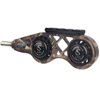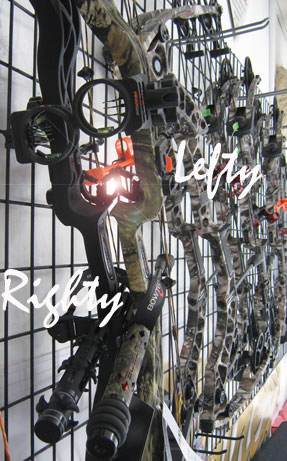
Any well designed stabilizer will help you be more accurate with your bow. Part of the story is they help tighten up your arrow groups by giving you a steadier aim at full draw. More importantly, stabilizers dampen any torque at the time of release. Hand shock and bow noise can also be improved too, but if you’re shooting a quality modern hunting bow, these will be secondary gains.
The real task of the stabilizer is to lessen any weird bow movement on release. If we all had perfect form there would be no need for a stabilizer. And even ‘those’ guys (and the girls) shoot with stabilizers. There are a lot of directional forces at play holding the bow string back as we aim. And if any of these forces are a fraction out of line at the instant we release – this will degrade our precision because these forces are all so directional. Picture a tight rope walker – that horizontal pole they use counters the same rotational forces that challenge us. Same physics, it’s just we have a different game.
Parallel limbs and the associated improvements we see on all compact hunting bows made today greatly reduce the need for a long stabilizer. Modern hunting bows are inherently stable. They are far less twitchy on release because the forces casting the arrow forward are cancelling themselves out by the north and south travel of the limbs. Older bow styles had hand shock and a ‘lurch’ as the limbs travelled forward (away) from the shooter. A stabilizer length of 4-10in is the most practical and effective choice for todays modern hunting bows. The accepted advice is to start with a 6-inch stabilizer. With a well tuned hunting rig, you’ll get smaller arrow groups. It’s pretty cool seeing how your groups shrink by adding a stabilizer after shooting your bow for some time. Most experienced bowhunters shoot a stabilizer of some sort and they’ve been around a very long time… some shooters get huge results, some don’t, but we all get a gain of some degree.



